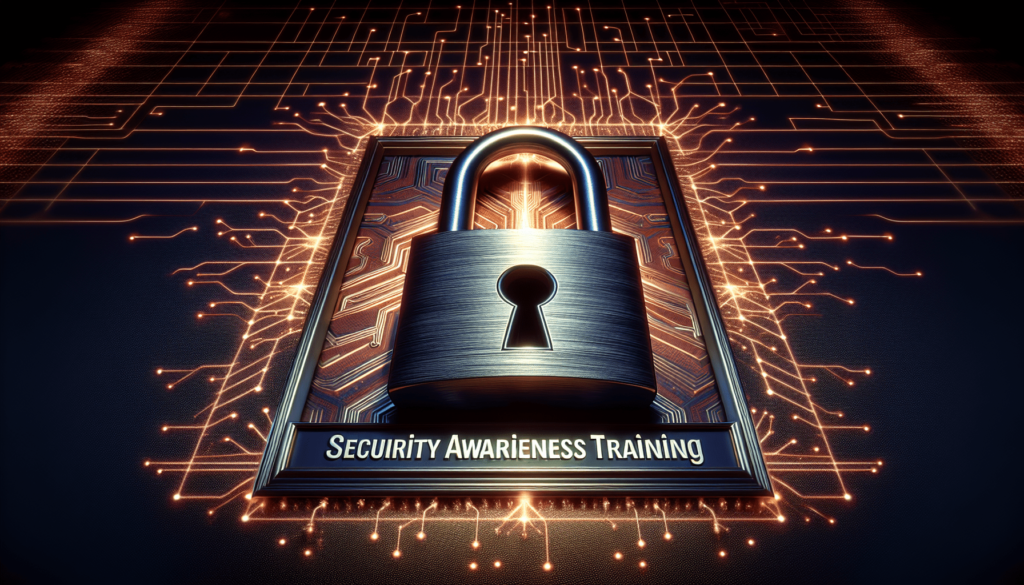In today’s interconnected world, the importance of security awareness training cannot be overstated. With cyber threats becoming increasingly sophisticated, organizations must ensure that their employees are equipped with the knowledge and skills to identify and prevent potential security breaches. However, simply presenting dry and monotonous training materials is not enough to capture employees’ attention and foster a sense of urgency. To truly engage your audience and create effective security awareness training content, it is essential to employ a range of engaging techniques and strategies that appeal to different learning styles. This article will explore key principles and best practices for developing captivating security awareness training content that resonates with employees and empowers them to become the first line of defense against cyber threats.
Choosing the Right Content Format
When it comes to creating engaging security awareness training content, one of the first considerations is choosing the right format. Different formats can be used to cater to different learning styles and preferences. Video content, for example, is a popular choice as it allows for visual and auditory learning. Interactive courses provide learners with hands-on activities and immediate feedback, enhancing their engagement and understanding. Simulations allow employees to experience realistic scenarios in a controlled environment, helping them develop the necessary skills to handle security threats. Finally, gamification adds an element of fun and competition, motivating learners to actively participate in the training.
Identifying Key Learning Objectives
Before creating any training content, it is important to clearly define the learning objectives. This involves understanding what specific goals the training aims to achieve and what knowledge or skills participants should acquire. Defining goals ensures that the training content is focused and relevant. It helps to keep the training on track and enables the measurement of its effectiveness. Understanding the target audience is also crucial in identifying key learning objectives. Different departments or roles may require different levels of security awareness training. Assessing knowledge gaps through pre-training assessments will allow for a targeted approach in addressing the specific needs of the learners.

Creating Compelling Storylines
To enhance the effectiveness and engagement of security awareness training content, it is important to create compelling storylines. Developing engaging characters can help employees relate to the training material and make it more memorable. Characters can be relatable employees who find themselves in various security-related situations. Designing realistic scenarios that reflect real-life challenges employees may encounter is another effective way to engage learners. By presenting them with scenarios that imitate their day-to-day experiences, learners are more likely to remain engaged and apply their knowledge in practical situations. Injecting humor and interactivity is an additional way to make the training more enjoyable and memorable for the participants.
Incorporating Multimodal Learning
Incorporating multimodal learning approaches can significantly enhance the effectiveness of security awareness training. Multimodal learning refers to using different forms of media and activities to cater to different learning styles and preferences. Visuals and graphics are powerful tools that can help learners visualize concepts and information. This can be done through infographics, diagrams, or charts that simplify complex topics. Including text and audio narration can accommodate different preferences for reading or listening to the content. Utilizing hands-on activities, such as interactive exercises or simulations, allows learners to apply their knowledge and practice their skills in a practical setting.

Ensuring Accessibility and Inclusivity
When creating security awareness training content, it is essential to ensure accessibility and inclusivity for all learners. This involves providing closed captions for videos, making the content accessible to individuals with hearing impairments. Offering translations in different languages enables learners who are not proficient in the training language to fully understand the material. Addressing different learning styles, such as visual, auditory, and kinesthetic, is also crucial. By using a combination of visuals, audio, and hands-on activities, learners with different preferences can engage with the content in a way that suits them best.
Building Interactivity and Engagement
Interactivity and engagement are key factors in the success of security awareness training. By incorporating interactive quizzes throughout the training content, learners can actively participate and assess their understanding of the material. Scenario-based decision-making exercises allow learners to apply their knowledge and make informed choices in realistic situations. Knowledge checkpoints at the end of each module or section help reinforce key concepts and ensure retention. By building interactivity and engagement into the training content, learners are more likely to stay motivated and actively participate in the learning process.
Balancing Entertainment and Education
When creating security awareness training content, it is important to strike a balance between entertainment and education. While it is essential to deliver crucial information, overwhelming learners with too much information can lead to information overload and disengagement. Keeping the messaging clear and concise helps learners focus on the most important points. Additionally, incorporating elements of entertainment, such as storytelling, humor, or gamification, can help make the training more enjoyable and increase learner engagement. Balancing entertainment and education ensures that learners remain interested and invested in the training content.
Including Real-world Examples and Case Studies
To make security awareness training content more relatable and practical, it is beneficial to include real-world examples and case studies. Highlighting security breaches and their consequences can help employees understand the potential impact of security threats. Exploring the consequences of these breaches can emphasize the importance of adhering to security protocols and practices. Additionally, illustrating best practices through case studies allows learners to see how security measures can be effectively implemented in real-life situations. By incorporating real-world examples and case studies, learners can better understand the relevance and necessity of security awareness training.
Promoting Continuous Learning
Successful security awareness training goes beyond a one-time event. Promoting continuous learning is essential to ensure employees retain their knowledge and skills over time. Offer refreshers periodically to reinforce key concepts and provide updates on the latest security threats and measures. Encouraging ongoing practice through regular quizzes or simulations can help ensure employees are actively applying their knowledge in their day-to-day work. Providing resources for further exploration, such as articles, videos, or online communities, allows employees to continue expanding their knowledge beyond the initial training. By promoting continuous learning, organizations can maintain a culture of security awareness and vigilance.
Evaluating and Iterating Training Content
To ensure that security awareness training remains effective, it is important to evaluate and iterate the training content. Collecting learner feedback through surveys or assessments allows organizations to gauge the perception and effectiveness of the training. Analyzing metrics and performance data, such as completion rates or quiz scores, provides insights into how well learners are mastering the material. Based on this evaluation, content can be updated and improved to address any identified shortcomings or areas for enhancement. By continuously evaluating and iterating the training content, organizations can ensure that their security awareness training remains relevant and impactful.



